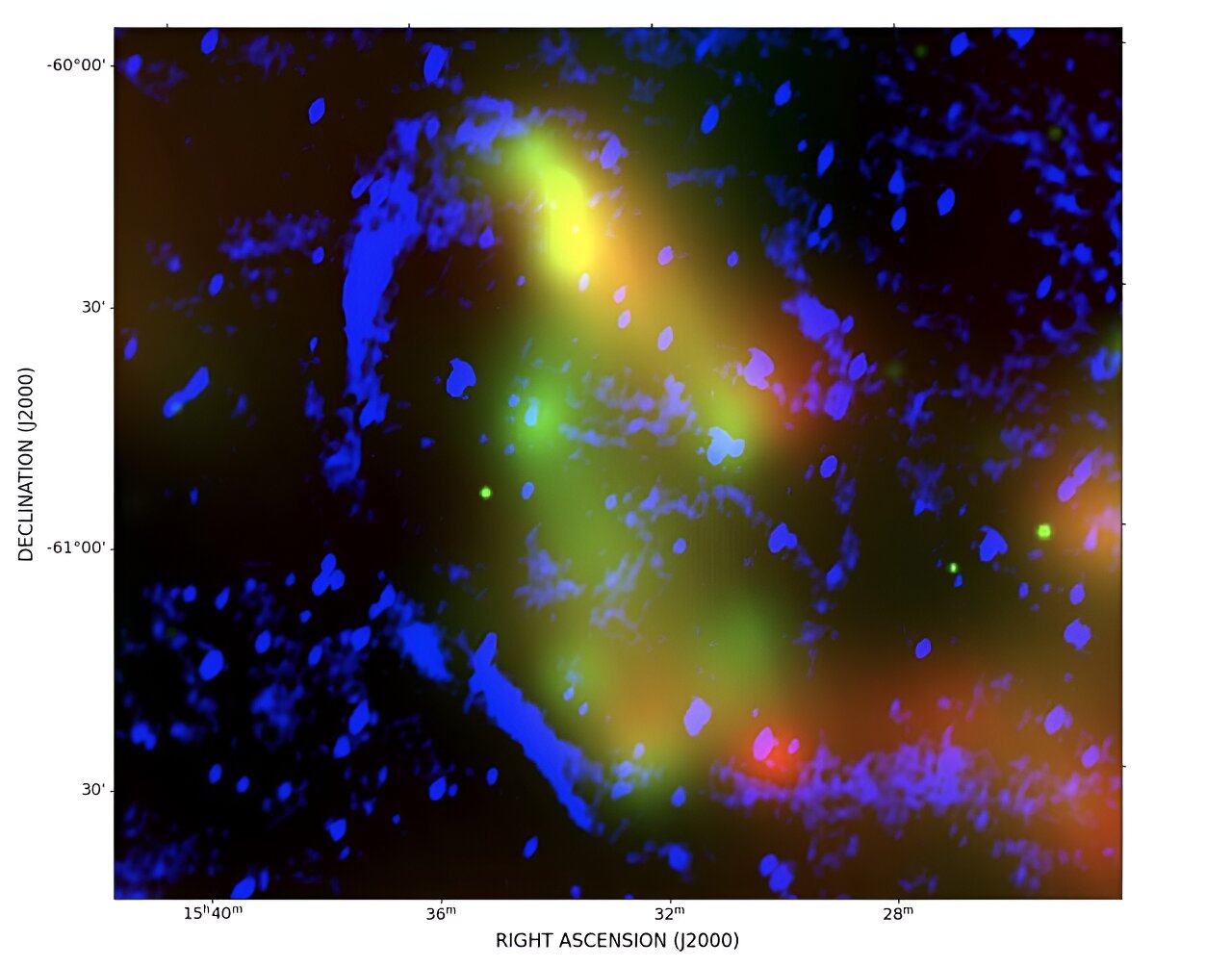× close
Astronomers from Curtin University in Australia and elsewhere report the detection of a new supernova remnant (SNR) located some 3,300 light years away. The newfound SNR, designated G321.3-3.9, has an elliptical shape and is estimated to be a few thousand years old. The finding was detailed in a paper published Jan. 30 on the pre-print server arXiv.
SNRs are diffuse, expanding structures resulting from a supernova explosion. They contain ejected material expanding from the explosion and other interstellar material that has been swept up by the passage of the shockwave from the exploded star.
Studies of supernova remnants are important for astronomers, as they play a key role in the evolution of galaxies, dispersing the heavy elements made in the supernova explosion and providing the energy needed for heating up the interstellar medium. SNRs are also believed to be responsible for the acceleration of galactic cosmic rays.
The extended source G321.3-3.9 was classified as an SNR candidate in 1997. Previous observations have revealed that it is an elliptical and almost complete shell with a size of 109×64 arcmin2, peak flux of 10 mJy/beam and total integrated flux density greater than 0.37 Jy.
Now, a team of astronomers led by Curtin University’s Silvia Mantovanini has analyzed a wealth of radio and X-ray data from various surveys and also from the Spektr-RG spacecraft, which confirmed the SNR status of G321.3-3.9 as a result.
According to the study, G321.3-3.9 shows an extended structure at low X-ray energies surrounded by a radio shell, and it does not present any diffuse emission in infrared. The spectral index of the source was measured to be -0.8, which is consistent with non-thermal synchrotron emission in accordance with a shell-type SNR.
Based on the collected data, the researchers estimate that G321.3-3.9 is located between 2,300 and 3,300 light years away. The distance estimates suggest that the SNR has a diameter of about 62–97 light years and its age is within the range of 1,700–4,000 years. Therefore, the assumed age is younger than what is expected from the shell shape and the low brightness at radio frequencies.
The astronomers note that these uncertainties are due to the limited photon statistic in X-rays and lack of association between the shell and a known pulsar. They add that none of the pulsars located in the same region have age or proper motion that could be related to a supernova remnant of the size of G321.3-3.9.
“We will perform PARKES follow-up observations inside the remnant shell in the radio band to look for a possible pulsar association. Successful detection of pulsations would enable calculation of the dispersion measure and therefore the age and the distance at which G321.3-3.9 is located, along with its expansion velocity,” the scientists explained.
More information:
S. Mantovanini et al, G321.3-3.9: a new supernova remnant observed with multi-band radio data and in the SRG/eROSITA All-Sky Surveys, arXiv (2024). DOI: 10.48550/arxiv.2401.17294
© 2024 Science X Network

Dr. Thomas Hughes is a UK-based scientist and science communicator who makes complex topics accessible to readers. His articles explore breakthroughs in various scientific disciplines, from space exploration to cutting-edge research.








